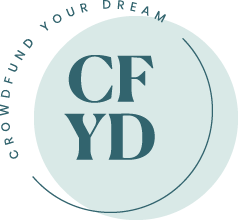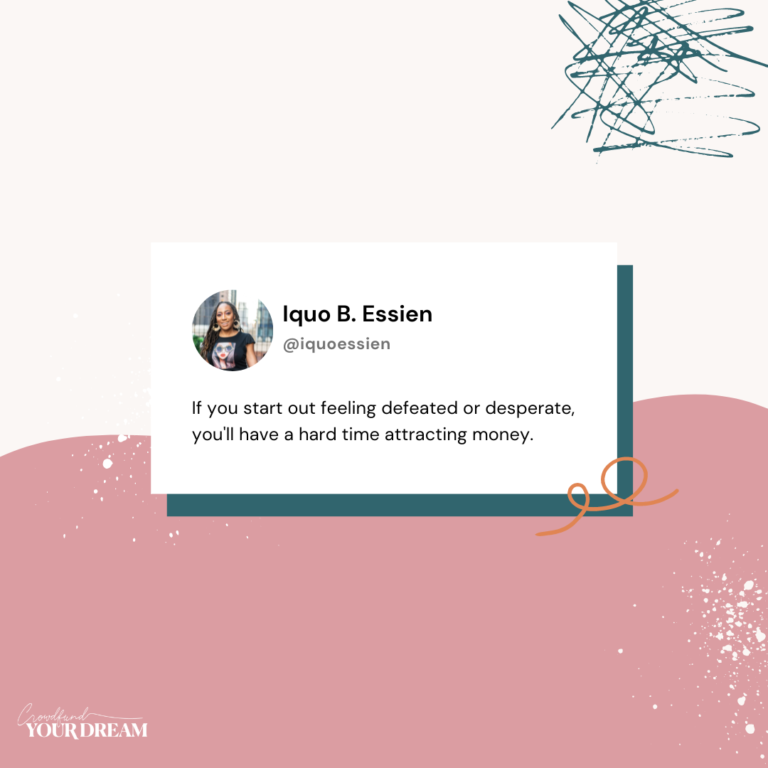Fundraising How-To Guide—9 Strategies to Fund Your Business
When I launched my first crowdfunding campaign in the midst of pre-production for my short film at NYU Grad Film, I had my back against the wall. I was out of options and desperate. If I knew then what I know now, the entire process would have been much smoother. But having now successfully raised $15K in 4 weeks for my film, $35K in 8 weeks for my business, and $300K+ for my clients, this fundraising how-to guide will test your IQ with 9 strategies to fund your business.
We’ve all seen many fundraising strategies. You’ve seen kids out selling candy bars for the school basketball team. If you’re a church-going person, you’ve seen people passing around a basket.
If you’re in New York or any major city with a subway, you’ve seen the buskers performing on the train and passing a hat around to collect money. And truly, all of these are time-tested fundraising strategies.
But do you know all the different ways you can raise money?
For example, some of them are:
- Live events
- Grassroots fundraising
- Letter-writing campaign
- Crowdfunding
- Patreon
- Equity Investment
- Renting or Buying Names
- Corporate Sponsorship
There are really dozens of ways that you can raise money. Let’s dive into some of them below!
1. How to Raise Money With a Live event
Many fundraising campaigns hinge on the success of a live event. This can be anything from a kickoff event to live auction, fancy gala, or a social event, like a party or flash mob. If you’re affiliated with an arts organization, or have a large friend/colleague network living in the same area, this could be a great approach for you. But keep in mind the costs associated with producing and marketing your event.
2. How to Raise Money With Grassroots fundraising
Grassroots fundraising achieves its goals through small donations from lots of people, as opposed to a wealthy individual or foundation. It’s a decentralized, community-driven approach based on peer-to- peer solicitation. As you can see, crowdfunding is a form of grassroots fundraising, although it’s now usually via a digital platform.
The advantages of peer-to-peer fundraising lie in the close, interconnected network of community support. Organizations rely heavily on the help of volunteers, asking strangers for money on the sidewalk, but this approach can work for artists, too. It might look like handing out postcards at social events, asking friends and acquaintances to donate or get the word out.
Consider these grassroots fundraising and event ideas:
- Film screening
- Bake sale
- Car wash
- Yard sale
- Block party
- Art show
- Teach a class
- Speaking engagement
- Host a karaoke night
- Product sales (CDs, DVDs)
- House party
- Performance
- Auction
- Raffle
- Host a sip & paint
- Host a game night
- Sell artwork
- Host a happy hour
3. How to Raise Money With an E-mail campaign
When considering where to put the most effort in your fundraising strategy, take a look at the numbers. According to 2016-19 statistics, the percentage of people who made a purchase based on a marketing message presented via email was 66%—versus 20% on Facebook, and 6% on Twitter. Furthermore, 91% of people use email daily compared with 57% for Facebook and 14% for Twitter.
Despite this, the vast majority of crowdfunders, if they do any marketing at all, focus more on social media posts than email— though it has about a 20% higher open rate than social media posts.
As a result, you’ll almost certainly want to include an e-mail campaign in your strategy. to encourage people to donate and share your campaign, or track your campaign progress for backers. The network you build now is the same one you’ll use to market the finished project. Think of your e-mail campaign as getting early buy-in.
4. How to Raise Money With SMS
In most cases, we only have the phone numbers of people we are close to. Because of this, sending a text or WhatsApp message with a link to a mobile-responsive crowdfunding page—or PayPal, Venmo, or Cash App—has a higher chance of being opened and acted upon.
5. How to Raise Money With a Letter-writing campaign
As a self-producing artist, your fundraising campaign isn’tpurely transactional. It’s an opportunity to re-connect withyour friends, family, and fans, share what you’re working on, and build community around your work. And what better way to do that than a good old-fashioned letter in the mail?
As digital channels increase, many nonprofits have transitioned away from direct mail campaigns. But since 2015, response rates have been on the rise. This is a boon both for artists and nonprofits, some of whom still rely on newsletter campaigns for survival.
Why not take a dual fundraising approach? Launch a digital campaign while simultaneously soliciting donations by direct mail. Include a personal anecdote, photos, your goal, and deadline in your letter. If possible, enclose a self-addressed stamped envelope, and make it easy for people to give online by including a link to your campaign page. Be sure to clean up your address list first to avoid returned mail and wasted postage.
6. How to Raise Money With Crowdfunding (Rewards-based)
Perhaps the most well known fundraising strategy, crowdfunding offers artists and creative entrepreneurs a way to raise money via an online platform, receiving small donations from a bunch of people (ie, the crowd). Platforms like Kickstarter and Indiegogo allow you to create a project page, launch a campaign for 0-60 days (or more), and raise funds, while also leaving the campaign with a ready-made audience and/or customers for your work. To date, billions of dollars have been raised online for a variety of projects.
In rewards-based crowdfunding, projects seek financial contributions in exchange for providing a service or product to donors. The project creator sets a funding goal, time limit, and rewards for donors. Each platform has different fees and options. (Be sure to check out Indiegogo’s Essential Guide to Crowdfunding and Kickstarter’s Creator Handbook!)
7. How to Raise Money With Patreon
Patreon is equivalent to an ongoing crowdfunding campaign with a major caveat: rather than getting paid once, per project, creators are paid by their patrons to continue creating on an ongoing basis. The company name is a combination of two words:
Patron: a person who gives financial, or other, support
Eon: an indefinite period of time
If you have an existing fan base—or want to grow one!—Patreon is a great option if you want to hone your craft by creating many smaller projects over time; you’re making consistent work and want to monetize it; or making limited income and want to grow your hobby into a sustainable business.
In exchange for a tip—$1, $5, $20, or any amount the patron selects— creators release a new piece of content (ie, a song, video, poem, illustration, etc). While Patreon does not charge the patrons, they take a 5% commission from creators (who also pay patrons’ CC fees.)
8. How to Raise Money By Renting or Buying Names
There are thousands of wealthy people who give money to the arts. We call them patrons. Many organizations purchase access to lists of these philanthropists whom they cold mail or e-mail. The cost of “renting” or “buying” names varies widely, but can decrease considerably if you have a strong relationship with the organization you’re buying from.
If you “rent” names, you can use them only once and can only add a contact to your database if the person becomes a donor. If you “buy” names, they become yours: you can add them to your database and use them as many times as you want.
However, the return from a “cold” list of names—people who have no prior connection to you—is notoriously low. A 3% return rate, meaning that 3% of the people to whom you send a letter send back a check, is extremely good.
When you reach out, send a prospectus, or a document describing your proposed project in enough detail so that investors may evaluate it. This document can include: a project summary, team biographies, project timeline, budget, marketing plan, distribution plan, revenue/profit projections, and letters of intent from other investors.
The objectives of equity investment are fundamentally different from rewards-based crowdfunding, in that investors are looking to get their money back plus yield a profit. Make a strong case for why their money is well spent on you.
9. How to Raise Money With a Corporate Sponsorship
It’s important to choose your partners wisely. And even if you can identify a partner that aligns with your brand, it can be challenging to win their attention and prove the value of the partnership. It’s helpful to approach local businesses that will actually see a benefit from the exposure.
Traditionally, events have been the default way of attracting corporate donations, which makes sense because sponsors get baked-in promotion to all of the event attendees. But by offering businesses the opportunity to sponsor donation-matching periods, you can offer them an even greater impact.
Instead of paying $10,000 for an event sponsorship, they can spend the same amount on a donation matching period and double (or triple) the impact they are making. You can also share a sponsor’s logo through activity feeds, landing pages, and donation receipts to make sure that every donor is aware of the corporate sponsor making the donation matching possible.
Activity tends to cluster around the start and end of the campaign and dip in the middle. Donation matching periods are extremely effective for powering through this middle portion of the campaign, so they’re a win-win-win for the project creator, donors, and corporate sponsor.
Conclusion
In summary, between live events, grassroots fundraising, a letter-writing campaign and more, there are tons of options for fundraising strategies. Most of these don’t require any special training. You just need a good story, and to communicate it to people.
So what are you raising money for? What strategies have you tried? Drop a comment in the box below!














